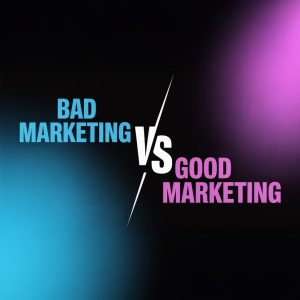Discover the optimal marketing budget for your business in 2025. Expert insights on allocation by company size, industry, and growth stage
Overview
Setting the right marketing budget can make or break your business growth strategy. Whether you’re a startup founder allocating your first marketing budget or a seasoned executive optimizing spend across multiple channels, determining the optimal investment level requires careful analysis of industry benchmarks, company size, and strategic objectives.
Current Marketing Budget Benchmarks: What the Data Shows
The latest industry data reveals substantial variation in marketing budget allocation across different business contexts. According to the 2024 CMO Survey, companies now allocate an average of 7.7% of total revenue to marketing activities, representing the lowest level in recent years. However, this overall average masks significant differences based on company characteristics and strategic priorities.
Publicly traded companies demonstrate higher marketing budget allocation, with Gartner’s comprehensive survey showing these organizations spending approximately 11% of total revenue on marketing activities. This higher percentage reflects the greater resources available to public companies and the intense competitive pressures they face in maintaining market position.
The B2B sector shows distinct marketing budget patterns, with Forrester’s 2024 research indicating that B2B firms invest an average of 8% of annual revenue in marketing activities. This allocation reflects the longer sales cycles and relationship-based selling approaches common in B2B markets, requiring sustained marketing budget investment to support customer acquisition and retention.
SaaS companies represent a particularly data-rich segment for marketing budget analysis. Current research shows SaaS organizations allocating approximately 8% of Annual Recurring Revenue (ARR) to marketing activities, with high-growth companies often exceeding 14% during expansion phases. The recurring revenue model of SaaS businesses enables higher marketing budget allocation due to predictable customer lifetime value metrics.

Marketing Budget Allocation by Company Size
Company size significantly impacts optimal marketing budget allocation, with different organizational scales requiring fundamentally different investment approaches. Small businesses typically allocate 5-7% of gross revenue to marketing budget activities, reflecting their limited resources and need for high-impact, measurable marketing initiatives.
Mid-sized businesses generally increase marketing budget allocation to 8-10% of revenue, leveraging their greater resources to support more sophisticated marketing approaches while maintaining efficiency focus. These organizations often have sufficient scale to support specialized marketing functions and advanced measurement systems within their marketing budget framework.
Enterprise businesses typically allocate 12-15% of revenue to marketing budget activities, reflecting their complex marketing requirements across multiple business units, product lines, and geographic markets. Large organizations can leverage scale advantages in their marketing budget allocation while supporting comprehensive brand building and market leadership objectives.
Startups face unique marketing budget challenges, with technology startups often advised to allocate 11-30% of revenue to marketing activities during growth phases. This aggressive marketing budget allocation reflects the critical importance of achieving market traction before competitors establish dominant positions in emerging markets.

Industry-Specific Marketing Budget Variations
Different industries demonstrate distinct marketing budget allocation patterns based on their unique customer acquisition costs, competitive dynamics, and business model characteristics. Understanding these industry-specific patterns enables more accurate marketing budget benchmarking and strategic planning.
The technology sector leads in marketing budget intensity, with software companies allocating substantial resources to customer education, thought leadership, and technical credibility building. Technology companies often maintain higher marketing budget percentages due to the need to educate markets about complex products and services while competing in rapidly evolving competitive landscapes.
Retail and e-commerce companies typically allocate 5-10% of revenue to marketing budget activities, with e-commerce organizations often reaching 20% during growth phases. The direct customer relationship and measurable transaction outcomes in retail enable sophisticated marketing budget optimization based on clear return on investment metrics.
Healthcare organizations face unique marketing budget constraints due to regulatory requirements and trust considerations. Healthcare companies typically allocate 7.8% of revenue to marketing budget activities, but this investment must navigate complex compliance requirements and multiple stakeholder needs while building credibility and trust.
Manufacturing companies generally operate with lower marketing budget allocation, typically spending around 5% of revenue on marketing activities. The B2B nature of most manufacturing marketing creates different marketing budget requirements compared to consumer-facing industries, with emphasis on relationship building and technical education rather than broad-based advertising campaigns.
Financial services companies allocate approximately 7.8% of revenue to marketing budget activities while navigating strict regulatory oversight and consumer protection requirements. The complexity of financial products creates substantial content marketing and education requirements within the overall marketing budget framework.
Digital vs Traditional Marketing Budget Allocation
The digital transformation of marketing has fundamentally altered optimal marketing budget allocation strategies between digital and traditional channels. Current research shows that 75% of marketing budgets now go to digital channels for publicly traded companies, representing a substantial shift from historical allocation patterns.
However, this digital emphasis varies significantly based on company size and strategic requirements. Large budget advertisers (spending over $100 million annually) maintain more balanced marketing budget allocation, with retail brands allocating 46% to traditional channels and automotive brands maintaining 70% traditional allocation within their overall marketing budget.
Medium budget advertisers (spending $5-50 million annually) demonstrate markedly different marketing budget patterns, allocating much greater shares to digital channels compared to both larger and smaller budget companies. This pattern reflects the accessibility advantages of digital channels and the complexity of traditional media buying processes for mid-sized organizations.
Search engine marketing represents the largest single digital component of most marketing budgets, accounting for 13.6% of total marketing budget allocation on average. This substantial allocation reflects the high intent characteristics and measurable return on investment of search marketing within integrated marketing budget strategies.
Social media marketing typically receives 5-15% of total marketing budget allocation, with variation based on target audience characteristics and business objectives. B2B companies often allocate lower percentages to social media within their marketing budget compared to B2C companies due to different customer behavior patterns and longer sales cycles.

Channel-Specific Marketing Budget Recommendations
Effective marketing budget allocation requires detailed understanding of individual channel characteristics and performance profiles. Digital marketing typically receives 40-60% of total marketing budget allocation, but this investment must be distributed strategically across multiple digital channels based on their unique advantages and performance metrics.
Content marketing represents a crucial component of marketing budget allocation, often accounting for 10-25% of total marketing budgets. This substantial allocation reflects content marketing’s role in supporting multiple objectives including search engine optimization, social media engagement, lead nurturing, and thought leadership development within comprehensive marketing budget strategies.
Email marketing typically requires relatively small marketing budget allocation but delivers exceptional return on investment for most organizations. Industry research consistently shows email marketing ROI ratios of 42:1 or higher, justifying dedicated marketing budget allocation despite lower absolute investment requirements compared to other channels.
Traditional marketing channels continue to provide value in specific contexts, typically receiving 15-25% of total marketing budget allocation. Television advertising remains effective for building broad brand awareness, while radio advertising can provide cost-effective local reach within targeted marketing budget strategies.
Events and experiential marketing typically receive 10-20% of total marketing budget allocation, reflecting their importance for relationship building, lead generation, and brand experience creation. However, event marketing budget allocation requires careful consideration of return on investment and strategic objectives due to high participation costs.
Optimizing Your Marketing Budget for Maximum ROI
Successful marketing budget optimization requires sophisticated measurement and analysis capabilities that enable data-driven allocation decisions. Organizations should implement attribution modeling that accurately measures cross-channel effects and customer journey complexity rather than relying on simple last-click attribution that may undervalue awareness and consideration channels within the marketing budget framework.
Customer lifetime value (CLV) analysis provides crucial insights for marketing budget allocation decisions by revealing the long-term value generated by different acquisition channels. Channels that acquire higher-value customers may justify higher cost-per-acquisition levels and increased marketing budget allocation based on superior long-term returns.
Marketing mix modeling enables sophisticated analysis of channel interactions and optimal marketing budget allocation strategies based on historical performance data and market conditions. This analytical approach can reveal synergistic effects between channels and identify optimal marketing budget allocation strategies for specific business contexts.
Testing and experimentation capabilities enable ongoing refinement of marketing budget allocation based on market feedback and performance data. Organizations should dedicate 10-20% of marketing budgets to testing new channels, messages, and allocation strategies while maintaining investment in proven approaches to ensure baseline performance levels.
Practical Implementation Framework
Developing optimal marketing budget allocation requires systematic assessment of company-specific circumstances, competitive environment, and strategic objectives. This assessment should evaluate multiple dimensions simultaneously rather than focusing on single factors such as industry benchmarks or revenue percentages when determining marketing budget levels.
Small businesses should focus marketing budget allocation on high-impact, measurable channels that provide clear return on investment. The recommended 5-7% revenue allocation should prioritize digital channels with strong measurement capabilities, local market presence, and customer retention activities within a focused marketing budget strategy.
Mid-sized businesses should leverage their greater resources to implement more sophisticated marketing budget approaches while maintaining efficiency focus. The recommended 8-10% revenue allocation enables investment in both performance marketing and brand building activities while supporting geographic expansion within strategic marketing budget frameworks.
Enterprise organizations should implement comprehensive marketing budget strategies that leverage scale advantages while managing complexity effectively. The recommended 12-15% revenue allocation enables sophisticated marketing approaches across multiple channels, markets, and customer segments while supporting long-term brand-building objectives.
Future Trends
Several emerging trends are reshaping marketing budget allocation strategies across industries. The rise of artificial intelligence and marketing automation is improving channel efficiency while enabling more sophisticated optimization of marketing budget allocation based on real-time performance data and predictive analytics.
Connected television and programmatic advertising are blurring traditional boundaries between digital and traditional channels, creating new opportunities for marketing budget allocation that combines the reach advantages of television with the targeting and measurement capabilities of digital marketing.
The increasing importance of customer experience and retention is driving marketing budget allocation toward owned channels such as websites, mobile applications, and email marketing. These channels provide direct customer relationships and ongoing engagement opportunities that support lifetime value optimization within comprehensive marketing budget strategies.

Conclusion: Building Your Optimal Marketing Budget Strategy
Determining the right marketing budget allocation requires careful analysis of multiple factors including company size, industry characteristics, competitive dynamics, and strategic objectives. While industry benchmarks provide useful reference points, successful organizations develop customized marketing budget approaches based on their specific circumstances and performance capabilities.
The shift toward digital channels continues to reshape marketing budget allocation, but the most effective strategies recognize the complementary value of integrated approaches that optimize across all relevant channels. Organizations that invest in sophisticated measurement and optimization capabilities typically achieve superior results from their marketing budget allocation compared to those relying on traditional broad-based approaches.
Success in marketing budget allocation ultimately depends on treating marketing investment as a strategic process that aligns with overall business objectives rather than a simple percentage calculation. Companies that maintain this strategic focus while implementing sophisticated measurement and optimization capabilities position themselves for sustainable growth and competitive advantage in increasingly complex marketing environments.









